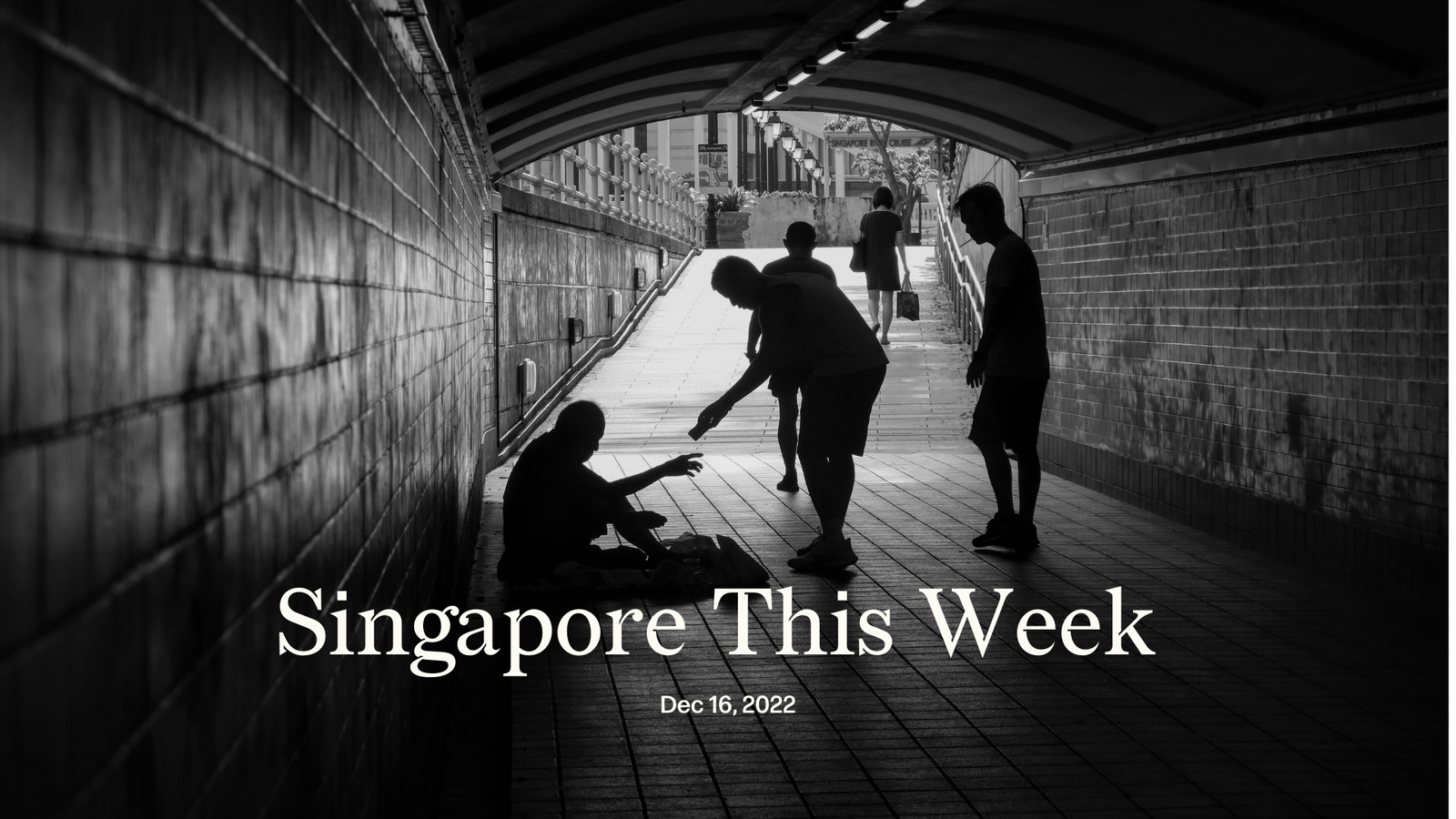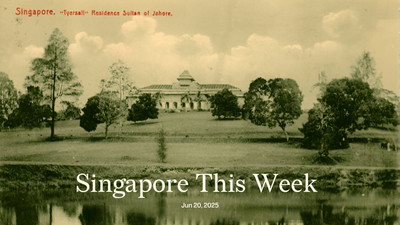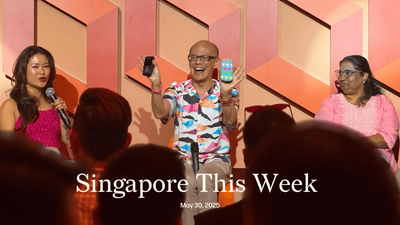Society: End of the daily-wage worker
Singapore just works. That’s an aphorism uttered by many who marvel at the efficiency of public services. Yet, precious little is known about the Singaporeans who clean the streets, fix our pipes and control the spread of mosquitoes (the “vector control operators”). For decades, many were employed by the public service and paid only a daily wage, without the benefits and security of full-time work. “The working conditions of the daily-paid workers in Singapore are poorer than in any other democratic country and any further deterioration would affect their morale.” So said unions in the 1950s. Though conditions improved in the subsequent decades, through the efforts of politicians and unionists, workers still faced a precarious existence in one of the world’s costliest cities. As The Straits Times (ST) reported last week, Tan Siew Tin, a 64-year-old mother of five, was paid about S$33 a day to work 630am-130pm, six days a week, cleaning streets in Clementi. That changed in 2021, when the National Environment Agency transitioned Tan and some 400 co-workers, among the last daily-wage workers in Singapore, to monthly salaries with benefits. Tan now earns double (about S$2,000 per month) what she previously did. It’s worth cheering the end of the daily-wage worker, though we must also ask why it took so long: as far back as the 1980s politicians were calling for the “colonial” scheme to be scrapped. Many of these jobs are now performed by foreigners without decent union representation. As society grapples with persistent inequalities and inadequate protections for contract and gig-economy workers, it’s important to keep improving our responsiveness to the needs of those at the bottom—whichever country they’re from.
Society: Is Singapore the world’s most expensive city?
No, we’re actually quite affordable! Every time the Economist Intelligence Unit (EIU) ranks Singapore as the world’s most expensive city—eight times in the past decade now—the establishment responds. “The EIU tries to put together a basket of what they think are expatriate costs, perhaps more on the higher end of expatriates,” Tharman Shanmugaratnam, then finance minister, said in 2014. “It is quite different from the goods and services consumed by ordinary Singaporeans.” This year, after the EIU ranked New York and Singapore as joint costliest cities, Gov.sg published a rejoinder, while The Business Times, CNA, and ST all syndicated the same Bloomberg article to push the same narrative: expats and locals consume different things, Singapore’s not that expensive. (Another less persuasive argument is that Singapore’s strong currency affects its ranking.) The EIU’s basket, says Bloomberg, includes “cheese, but not tofu; spaghetti but not noodles; cognac but not baijiu.” Other problematic inclusions: foreign newspapers and cars. But why shouldn’t Singaporeans aspire to eat cheese and spaghetti, drink cognac, read The New York Times and own a car? The spirit of this messaging is troubling. With Singapore’s efforts to attract the world’s rich, the government seems to have accepted this quality-of-life divergence: one standard of living for the aristocrats and another for the hoi polloi. In other words, you shouldn’t worry if your foreign colleague or your minister buys costly cheese from Jason’s—as long as you can afford cheap eggs from Sheng Siong. This reeks of classism as well as a defeatist attitude towards raising living standards. The segregation also threatens social cohesion. A more enlightened approach would be to admit that there’s a difference in consumption baskets—but that we must strive to narrow it by addressing inequalities.
Society: Philanthropy at home and abroad
It’s the giving season, and no better time to publish philanthropic rankings. Of 101 Singaporean organisations, The Ngee Ann Kongsi ranked top in 2022, donating S$37.7m in grants to education, culture and heritage causes. The Lee and Lien Foundations took second and third place respectively (S$32.3m and S$23.2m), focusing on societal issues that include community service, poverty alleviation, as well as elderly and palliative care. Into its second year, the report by Soristic Impact Collective, a consultancy, focuses on private givers, and gives an insight into the communities that fall through the cracks in one of the world’s richest cities. The 10 largest groups, of which four are the philanthropic arms of companies, donated a total of S$163m. Forbes Asia’s annual Heroes of Philanthropy, a separate assessment of charitable individuals, listed two Singaporeans on the unranked list of 15: billionaire John Lim, co-founder of ARA Asset Management and his elder son, Andy Lim, group CEO, JL Family Office. Through the Lim Hoon Foundation, the Lims give out scholarships to disadvantaged youth in Singapore with a strong academic background. More broadly, the Republic has its sights set on becoming a regional centre for philanthropy. Our strong governance and reliable legal system already provide the framework for this. Corporations, family offices and private donors, however, have asked for tax breaks even when donating overseas. Currently only donations to local charities with approved IPC (Institution of a Public Character) status qualify. (At least 80 percent of their funds raised publicly must be distributed domestically.) Given that Singapore is far wealthier than its neighbours, there is a surfeit of urgent environmental and humanitarian causes overseas, including forest destruction, clean water access, and the refugee crisis. It would be great if we could direct philanthropic funds to them—in clean, transparent ways.
Arts: Singapore Art Week
2023 kicks off with the annual Singapore Art Week (SAW), which will feature over 130 new works and art events across the island. One highlight is the homecoming of “Pulp III: A Short Biography of the Banished Book”, Shubigi Rao’s work for the Singapore Pavilion of the 2022 Venice Biennale. Pulp is an ongoing artistic research project on the history of book destruction and its implications for knowledge and memory—an unusual commission from a government with its own history of banning books, but a welcome and valuable intervention nonetheless. The coming year also marks SAW’s debut collaboration with the People’s Association, which takes SAW to heartland neighbourhoods from Bedok to Bukit Gombak. SAW runs from January 6th to 15th 2023. More information can be found on its website.
Arts: RATA Orkestra
The Singapore music scene is ending the year on a strong note with the debut performances of RATA Orkestra. RATA is a newly assembled musical ensemble featuring some of the most inventive musicians working in Singapore today: Azrin Abdullah (oud), Andy Chia (dizi, didgeridoo, electronics), Cheryl Ong (percussion), Safuan Johari (electronics), Rizman Putra (vocals), and weish (vocals). The performance will also feature guest vocals from Indonesian musician Nova Ruth and visuals from multimedia artist Brandon Tay. Taking its name from the Malay word for “flat”, RATA is a musical experiment in egalitarianism between both its musicians and with the audience itself. The performance takes place at the Esplanade’s new Singtel Waterfront Theatre, which will be turned into a flat floor gallery around which the audience can move to experience the music from different vantage points. “RATA: new grounds, new sounds” is a commission for In New Light, the Esplanade’s 20th anniversary programme. The performance runs from December 29th to 31st, tickets are available via SISTIC.
Arts/Internet Culture: AI art
Over the past two weeks, social media feeds have been filling up with digital portraits of their users. No, there hasn’t been a concerted push to give digital artists work. Instead, this is the work of the mobile app Lensa, the latest in a new wave of AI-generated art. Users upload images of themselves to Lensa, featuring various poses and expressions, and these images are fed back to them in the styles of different artists. Lensa uses Stable Diffusion to create its images, a technology that is trained on a database of digital art taken from the wider web. Crucially, artists cannot opt out of their work being used to train this algorithm, raising questions about the ethics of this technology. The artists whose work has been turned into “raw material” for the app remain uncredited and uncompensated. Elsewhere, women (especially women of colour) have noted that the app generates “overtly sexualised” images for them, reflective of the skewed data sets that are used to fuel the app’s output. Lensa is still the fad of the month, despite costing money, perhaps because it taps into the modern desire for the quick, cheap, and easy.
History weekly by Faris Joraimi
We inch closer towards the Most Wonderful Time of the Year. Orchard Road lights up as malls become winter wonderlands with conifer wreaths and reindeer sleighs. Songs transport us to cosy firesides where chestnuts roast and crackle. Christmas here is now closely tied with this European-North American setting, despite having been celebrated in our region for centuries in very local ways. Singapore has been letting it snow for over a hundred years. “In spite of adverse climatic conditions,” reported the Straits Budget in 1896, “the tropical Christmas, as a day of goodwill and jovial harmony, is assimilated more closely than many might imagine to the Christmas of the Temperate Zone.” Department stores John Little, Katz Brothers and Robinsons had decked their halls with Christmas trees while boasting seasonal cakes and puddings, fine apparel, fancy homeware, and toys. No doubt their patrons—mostly well-heeled Europeans—were well-stocked to exchange presents and hold holiday dinners. I can almost picture walking down Commercial Square (Raffles Place today) one evening in December 1896, looking into the windows of those shopping palaces all “aglow with a great variety of Christmas goods'' and “an endless diversity of useful and beautiful things.” The effect, as the reporter enthused, would’ve been “astonishing”. For the passing amah or trishaw rider, astonishment was all they could afford. May we be agents of blessing to all we meet. Selamat Hari Natal, or as our Portuguese Eurasian friends say in Kristang (as their ancestors did in old Melaka), Bong Natal.
Tech: Oh my, we’re going public
Singapore’s property agents and financiers to the fore! Amid the funding winter and widespread tech layoffs, Singapore-based property platform Ohmyhome seems to be unfazed as it has filed for an IPO in the US with a valuation of around US$88m (S$118m). Founded in 2016 by sisters Race and Rhonda Wong, Omyhome allows users to buy, sell, and rent properties through its online platform, which has a database that handles 175,000 transactions per month. According to its filing, the company intends to sell 3.25m shares at a price of between US$4 and US$5 (S$5.38 and S$6.73) per share to raise up to US$16.25m (S$21.89m), or about US$14.6m (S$19.6m) at the midpoint (US$4.50). Ohmyhome also stated in the filing that it aims to become a property super app that is present throughout the customer’s journey, from initial listing to actual property transaction and maintenance. Also eyeing an IPO is Singapore-based cashback platform Shopback, which has recently raised US$30m (S$40m) in equity funding from Australia-based Westpac Banking Corporation as part of its Series F extension round. With the latest close, Shopback has raised around US$355m (S$478m) and should give it enough runway before it goes public.
Tech: A record haul
Haulio, a Singapore-based smart digital container trucking platform, has made its first overseas acquisition, acquiring a controlling stake in the Indonesian logistics start-up Logol. Founded in 2017 by Alvin Ea and Sebastian Shen, Haulio optimises container movement on land by reducing the number of empty miles for the 1.8m 20-foot equivalent units of cargo that the company transacts and moves each year. Meanwhile, Jakarta-based Logol simplifies data entry for logistics players, allowing shippers and haulers to connect with others in the supply chain. Haulio currently has 800 trucking and hauling companies and a fleet of 10,000 first-mile vehicles. Its acquisition of Logol will increase its shipping units by 2,000. Haulio also signed a memorandum of understanding with the National University of Singapore’s Centre of Excellence in Modelling and Simulation for Next Generation Ports. The agreement will allow the two companies to collaborate on the development of a “smart haulage scheduler”. Haulio also intends to launch an integrated e-billing payment platform. Haulio’s acquisition of Logol promises to boost the productivity of South-east Asia's logistics sector in the long-haul.
Tech: Manufactured creativity
Singapore is attempting to strengthen its claim to be a hub for content and IP creation in telling compelling Asian stories to the world. The Infocomm Media Development Authority (IMDA) has announced the launch of a S$5m Virtual Production Innovation Fund, which aims to support the city state's media industry in harnessing virtual production technology. The technology uses LED screens powered by 3D game engines to create photorealistic sets for filmmaking, saving producers precious time and money as it eliminates the need for road closures, rental and permit fees, and set construction when filming. Disney’s “The Mandalorian” was shot with such technology. IMDA will take a two-pronged approach to develop these capabilities. The first is a collaboration with the National Film and Television School in the UK to help develop local talent in the field. The second is investing in production and capability development for Singapore enterprises and talent. In addition, IMDA is collaborating with Epic Games, the developers of the 3D creation tool Unreal Engine, to host an industry challenge in the first quarter of 2023, to encourage creators to experiment with the Unreal Engine for virtual production. As ever in Singapore, though, the stumbling block to storytelling and creative content is not going to be money and technology but censorship, both overt and self-censorship. Just a few weeks ago, IMDA effectively banned “#LookAtMe”, a new Singaporean film, on the dubious grounds that it “denigrates a religious community and has the potential to cause enmity and social division.” To emulate Korea and other emerging film hubs, Singapore needs not just fancy technology but more freedom.
If you enjoy Jom’s work, do get a paid subscription today to support independent journalism in Singapore.








